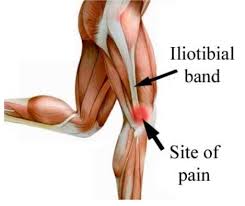Understanding Ankle Injuries
Ankle injuries are among the most common sports-related injuries. While ankle sprains are the most well-known, they can also mask other injuries such as subtle fractures, tendon injuries, or osteochondral lesions. Therefore, professional evaluation is recommended for accurate diagnosis and treatment.
Ankle Sprain: What is it?
The majority of ankle sprains are inversion injuries, where the foot rolls outward, damaging the lateral ligament complex. This is different from eversion injuries, which affect the medial ligament complex. During an inversion injury, the most commonly affected ligaments are:
- Anterior Talofibular Ligament (ATFL)
- Calcaneofibular Ligament (CFL)
- Posterior Talofibular Ligament (PTFL)
In severe cases, both medial and lateral ligaments may be affected, though this is rare. Most sprains are minor and heal with home treatments like rest and ice. However, if your ankle is very swollen, painful to walk on, or if you have trouble putting weight on it, see a doctor. Without proper treatment and rehabilitation, a severe sprain can weaken your ankle, making it more likely to be injured again. Repeated sprains can lead to chronic ankle pain, arthritis, and ongoing instability.
Initial Treatment: PRICEM Protocol
For the first 48-72 hours, follow the PRICEM protocol:
- Protect: Avoid further injury.
- Rest: Avoid weight-bearing if it’s painful. Use crutches if needed.
- Ice: Apply ice for 10-30 minutes every few hours. Do not apply ice directly to your skin.
- Compression: Use bandages or wraps to immobilize and support your injured ankle. Avoid excessive compression—if toes feel numb or change color, loosen the wrap.
- Elevation: Keep your feet elevated above heart level.
- Mobilization: Early mobilization has better outcomes compared to immobilization for less severe sprains. Move your ankle in all directions as soon as possible. Severe injuries may require a period of immobilization.
How We Can Help: Explain – Treat – Advise – Rehabilitate
Pain and Swelling Control: Initially, we focus on managing pain and swelling.
Restoring Range of Motion: We then work on establishing a good range of motion to prevent stiffness and ensure better recovery.
Improving Muscle Control and Strength: We provide tailored exercises to mobilize the joint, stretch surrounding muscles, and improve balance and muscle strength. Progression through these steps will depend on your injury status and personal goals. Supplementary exercises may be recommended even after full recovery for prevention.
Our Treatment and Patient Management Approach
- Education and Advice: We explain your condition and how to manage your symptoms actively. This helps reduce unnecessary stress and anxiety.
- Tailored Treatment: We offer comprehensive treatments to reduce pain and facilitate recovery.
- Therapeutic Exercises: We guide you through therapeutic exercises to help you return to normal activities as soon as possible.
- Prevention Strategies: We help create personal prevention strategies to avoid future injuries.
- Patient-Centered Care: We refer you for scans, tests, or to appropriate consultants if further investigation is needed.
See also:
- Running Related Injuries (RRI’s)
- Slipped Disc or Disc Herniation
- Sciatica – What is it?
- ICE or HEAT
- Part 1: Tendonitis Vs Tendinopathy – The difference!
Sources:
Evidence-based treatment for ankle injuries: a clinical perspective (2010). Chung-Wei Christine Lin, Claire E Hiller, and Rob A de Bie. J Man Manip Ther. 18(1): 22–28.



